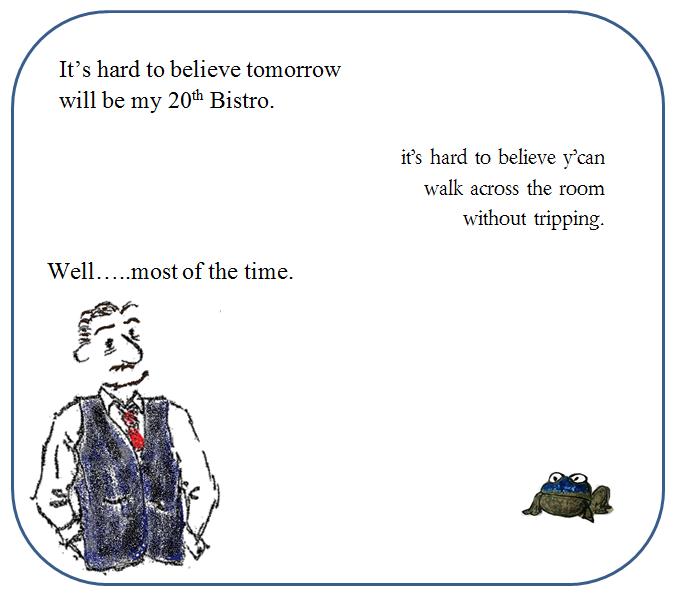Song of the Open Road
 by Walt Whitman
by Walt Whitman
Author Archives: Dr. Bear
Guys: Let’s be Men!
I’m not sure if you remember, but a while back there was a day we had a series of conversations, in which the phrase “Because he’s a boy” kept coming up. An example I recall was you wondering why in the world anybody would try to open a banana with a 10 inch butcher knife, and me explaining “because he’s a boy” (luckily, a boy with 10 fingers, for the time being).
Boys do silly, fun and sometimes dangerous things. It is part of being a boy. It is perplexing if you have never been one, but what are you going to do?
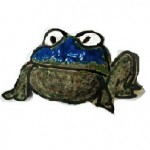
ahem!
However, at some point, being a boy should stop—well, unless you are the one boy who never grows up; Peter Pan can be grand-fathered in, I suppose. Although if he never grows up, is the word grandfather appropriate?
As I was saying, at some point, being a boy should stop—or at the very least, diminish. In the greater life-cycle of the male of the species—we will use the generic term “guy’—there should at some point be a transition from boy to man. Yet, there seems to be a marked trend at the present away from this, and towards a prolonged male adolescence. Guys who are way past the point where they should have become adults are still being boys. It has even spawned a whole movie genre which the New York Times likes to call the “Man Child.” It appears to be making Judd Apatow rich. Of course, the target audience for these movies is guys in their 20s who themselves do not want to grow up. It can even extend to middle aged men with movies like Grown Ups. I’m not entirely sure it is possible to produce a comedy in which the men are not immature.
The whole thing mystifies me.
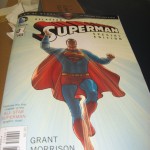 Don’t get me wrong: I did enjoy being a boy, and was quite good at it (I have the stories, some of which you have heard, and the scars to prove it). Nevertheless, I remember looking forward to being a man. I wanted to be a man (OK, to be honest, I wanted to be a man, 36, and tenured, but that might just be me). A big part of it, though, was that my heroes were men. My movie heroes—John Wayne, Humphrey Bogart, Gregory Peck, Paul Newman, Robert Redford, etc.—were all men, even, what you might call “real men.”
Don’t get me wrong: I did enjoy being a boy, and was quite good at it (I have the stories, some of which you have heard, and the scars to prove it). Nevertheless, I remember looking forward to being a man. I wanted to be a man (OK, to be honest, I wanted to be a man, 36, and tenured, but that might just be me). A big part of it, though, was that my heroes were men. My movie heroes—John Wayne, Humphrey Bogart, Gregory Peck, Paul Newman, Robert Redford, etc.—were all men, even, what you might call “real men.”
Movie heroes, however, aren’t as vivid as flesh and blood heroes. My biggest reason for wanting to be a man was that the men in my life made it look so cool. My uncles were (and remain) people I wanted to be like. My grandfathers were both really great to spend time with. Watching Dad engaged in after dinner conversation with other men—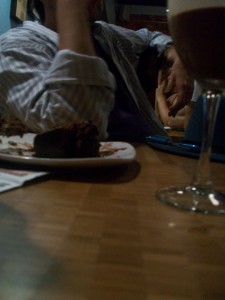 Fred Norris, Scott Bartchy, and the occasional passer through like Bob Wetzel or Bob Fife—was fascinating, and more entertaining than anything we boys did.
Fred Norris, Scott Bartchy, and the occasional passer through like Bob Wetzel or Bob Fife—was fascinating, and more entertaining than anything we boys did.
My father made being a man look brilliant and incredible.
He still does.
My goal was to be like him.
It still is.
Although being a boy was fun, I didn’t want to be a boy indefinitely.
I wanted to grow up and be a man.
I’m not sure at what point it became more appealing for guys to be boys rather than becoming men. Certainly by the time The Simpsons (which I love) came around, it was clear that it was cooler to be Bart than to be Homer (also more fun to be naughty, but that is another day’s column). But this shift is an alarming trend, and must be stopped before the entire world is populated by Adam Sandler wannabes.
Now, it won’t do for me to just say: Hey! Grow up! I should give some reasons why to be a man.
First (and this is a universal guy reason for doing things): Chicks dig it.
Although there is something charming about a man who can be a boy, there is nothing at all appealing about a 200 pound little boy.
If they are trying to impress someone, especially if they are hoping for any kind of relationship, maturity is a real draw and immaturity is a real turn-off, don’t you think? And you might be the kind of person a guy might want to impress.
Related to this, by the way, a suit and a tie are much sexier than a ratty sweatshirt, baggy shorts, and a backwards baseball cap.
Also more appropriate for church, the theatre, or a date.
Don’t get me started on Man-Child wardrobes, but do let me warm the guys who are reading this to take off your hat in the Bistro; Wode Toad has a really long tongue.
Secondly: Responsibility.
Yes, I know that this is a scary word, and it is probably why these boys are avoiding growing up in the first place, but think about it: responsibility is a part of freedom. It is the price one pays for getting out of footed pajamas and the high chair and joining the adult world. As an analogy, getting a car means having a lot of freedom to go places, but it also means suddenly have a lot of responsibilities which keep it running. Being a grown-up is similar; it gives you new freedoms to go places, but it has its costs.
Being a man means taking responsibility for yourself and for others; it’s what men do. This may seem rather dull at the least and terrifying at the worst, but it has its perks.
Third: Fun.
Again, these boys probably are avoiding growing up because it doesn’t seem to be fun, but one can be a man and still be as playful as when one was a boy.
My father can be a very dignified gentleman. He also once spent a half an hour on his hands and knees in the kitchen entertaining a 2 year old by making zucchini and summer squash dance and run around.
My uncle Dale is quite manly—even to the point of flying planes and working lumber in the Northwest—but is also sillier than any giggling little boy I know. He is also a world-class imaginary jacks player (personally, imaginary table tennis is more my style, mostly because it is noisier). Certainly he has more fun than most of the knuckle dragging college boys I see mumbling through the streets, slouching towards Numan’s Cafe & Sports Bar. Read Brandon’s Articles on playfulness–he is more fun because he is responsible for the girls, not less.
Men still play basketball, still yell at games, still play games, go on road trips (my Dad circumnavigates the globe, your dad flies his own plane), camp, kayak—you name it.
Finally, and most importantly for me: Pride.
 This is why I would not be able to abide being a permanent boy. Whenever I see one of these immature guys, I want to yell: where is your pride, man? It’s humiliating! To be a man is to take responsibility for who you are and what you do and to be able to look upon both of those and take pride in them. It is taking responsibility for others that you care about, or for commitments you have made, and taking pride in them. What does the overgrown boy have to take pride in? High Scores on their games? Their Graphic Novel collection? OK, that’s not so bad, but remember: by playing and by reading one is pretending to be somebody one can take pride in; by being a man they could actually be that person.
This is why I would not be able to abide being a permanent boy. Whenever I see one of these immature guys, I want to yell: where is your pride, man? It’s humiliating! To be a man is to take responsibility for who you are and what you do and to be able to look upon both of those and take pride in them. It is taking responsibility for others that you care about, or for commitments you have made, and taking pride in them. What does the overgrown boy have to take pride in? High Scores on their games? Their Graphic Novel collection? OK, that’s not so bad, but remember: by playing and by reading one is pretending to be somebody one can take pride in; by being a man they could actually be that person.
I don’t accept that boys will be boys; boys are meant to become men.
Take pride in yourself and grow up. Be a Man!
So, that is why one should be a man, but the bigger question, is: How does one go about being a man?
Of course, it goes without saying that mistreating women is cowardly and un-manly, and that being a man of quality also means treating children and animals kindly, but there are so many other practices involved in being a man…
Please greet Richard from me, Meg, and wish him a Happy Father’s Day.
For the rest of you: a home cooked meal is the best thing for Dad (well, second to sailing), but if that doesn’t seem practical, remember that a hand-written note is always appropriate, if not that—would it kill you to call? If nothing else, feel free to bring the great man to Robert’s Philosophy Bistro.
Apple Chai Muffins
 So, a friend of mine who loves muffins was coming to town, and so we decided we should whip up some of the Bistro’s wonderful muffins. However, then she commented on not liking the “weird” stuff we do, like beets and rhubarb (I suppose Srirachi is right out). So, we came up with this rather normal muffin recipe.
So, a friend of mine who loves muffins was coming to town, and so we decided we should whip up some of the Bistro’s wonderful muffins. However, then she commented on not liking the “weird” stuff we do, like beets and rhubarb (I suppose Srirachi is right out). So, we came up with this rather normal muffin recipe.
Ingredients:
- 2 cups flour (Whole wheat, white, both, as you wish)
- ½ cup of sugar
- 2 tsp baking soda
- ½ tsp salt
- ½ cup brown sugar
- ½ tsp cardamom
- ½ tsp cinnamon
- ½ tsp ginger
- ¼ tsp cloves
- ¼ tsp nutmeg
- 1 cup diced apples
- ½ cup chopped golden raisins
- ½ cup rolled oats
- ½ cup walnuts
- 2 cup cooked sweet potato (I like it baked, but I assume canned will do)
- 3 eggs
- ½ cup buttermilk or Greek yoghurt
- ½ cup oil (it might work without this; I liked making it with coconut oil.)
- 2 tsp. vanilla
- ½ cup brewer’s yeast (optional)
Step 1, Prepare Ye the way: Preheat the oven to 350°, chop the apple, either grease the muffin tins or put in the cupcake liners (I usually spray a little canola oil in the bottom of these to make things come out easier). I get 2 dozen medium sized muffins out of this mix.
Step 2, sifting the dry ingredients: In one bowl crumble up the brown sugar, then sift (mix if you don’t have a sifter) in the flour, white sugar, baking soda, brewers yeast, and salt. Mix thoroughly.
Step 3, mixing the wet ingredients: In another bowl, mix the apples, sweet potato, spices, vanilla, oatmeal, and walnuts,.
Step 4, combining the big mess: Add the dry ingredients to the wet ones and mix well. You want to make sure the individual bits of apple are each coated to keep them from getting too clumpy. Now mix in the eggs, buttermilk, and oil. The consistency should be much firmer than batter, but a little more liquid than cookie dough.
Step 5, baking: Fill two dozen or so muffin tins. Bake at 350 degrees for 30 minutes. See how they look. Stick a toothpick in one and see if it comes out battery.
 Step 6, sharing: As always, these are great for breakfast, but especially great to share with a friend or loved one. Invite somebody over for Tea or an Herbal Infusions or some sort (maybe even for Chai). Better yet, brag about them and see if you can get somebody to invite you over for tea just to see how good they are.
Step 6, sharing: As always, these are great for breakfast, but especially great to share with a friend or loved one. Invite somebody over for Tea or an Herbal Infusions or some sort (maybe even for Chai). Better yet, brag about them and see if you can get somebody to invite you over for tea just to see how good they are.
How I came to talk to myself
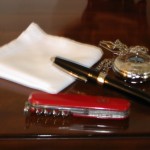 Some people assume I have always talked to myself.
Some people assume I have always talked to myself.
My wife likes to tell the story of walking into the kitchen one morning early in our marriage and asking:
What are you doing?
Nothing, really.
You were waving your arms.
Oh. I was lecturing.
To who?
Hmm. The toaster, I think.
I remember exactly when I started talking to myself.
I was 12 and sitting all alone at a window seat on a crowded bus.
Earlier that spring, at school, as the result of some extreme creativity not encumbered by the least bit of common sense, I had broken my left arm. The accident splintered the humerus into several fragments and badly damaged the radial nerve serving the top side of my arm. As a result, I lost most of the feeling and muscle control of my left arm beneath the elbow and the top of my left hand. While the ER doctor was trying to set the bone without any pain killers, but with the jagged bone grinding down upon the nerve, I learned the meaning of pain; the next 6 months of physical therapy would teach me even more about pain, but also the meaning of perseverance. The experience remains the third or fourth most painful experience of my life. Because extreme pain pulls you into yourself, it is inherently isolating and lonely; for me, perseverance is also nested in loneliness.
Unlike my previous hospitalizations, which had been for my epilepsy, the broken arm was something tangible, physical and manageable, so there were things I could do; I could own and work at a broken arm. It also helped that I could earn tips smuggling beer, wine, cigars and cigarettes into the injury ward, and that the men I was with looked out for me.
My parents also helped me with this, both by being very supportive and by encouraging me to take ownership of my own healing (also by not dwelling on how serious this was and the possibility I might never regain use of that arm). After I had come home from the hospital, my dad sat me down and explained that my brother could not be left alone in the afternoons, and that I would have to learn to take the bus, by myself, clear across town twice a week for physical therapy.
 Several weeks later, I remember being on the bus on the way home, and feeling terribly lonesome for somebody to share the bus ride with me. I was proud of my independence, and knew I could manage, but the long solitude of the rides and the waiting rooms wore on me. I am not sure that I am exactly an extrovert, but most people who know me will point out that I certainly am talkative, and not having anyone to talk to is difficult for me.
Several weeks later, I remember being on the bus on the way home, and feeling terribly lonesome for somebody to share the bus ride with me. I was proud of my independence, and knew I could manage, but the long solitude of the rides and the waiting rooms wore on me. I am not sure that I am exactly an extrovert, but most people who know me will point out that I certainly am talkative, and not having anyone to talk to is difficult for me.
Out of my desperate need for someone to talk to, I suddenly realized that I could have a conversation with myself. It might strike some people as odd that I had never considered this before, but I was the youngest of a talkative family and shared a room with my brother, and so getting solitude had always been more of a concern than getting company.
The dialogue that started then and continued for decades tended to be between two sides of myself—the more emotional, dreamy part of me and the more rational, logical, controlled part. This is a pretty natural division within me, and also was good for this situation, since the emotional part of me was scared and lonely and the rational side of me was reassuring. As the years went by, it was also handy, since the rational side of me tended to be my conscience and also more cautious and sensible. It is a conversation, an internal dialogue, that has continued now for more than 3 decades.
between two sides of myself—the more emotional, dreamy part of me and the more rational, logical, controlled part. This is a pretty natural division within me, and also was good for this situation, since the emotional part of me was scared and lonely and the rational side of me was reassuring. As the years went by, it was also handy, since the rational side of me tended to be my conscience and also more cautious and sensible. It is a conversation, an internal dialogue, that has continued now for more than 3 decades.
Yes, there is almost always a dialogue going on in my head, and always at least one song playing. Most of the time, there is also some drama; there is at least one—often several—really strong emotions wrestling it out beneath the visible surface—anger, passion, desire, despair, joy, grief, and a lot of affection. There is usually, some food, too. It is like having a rather bizarre (and poorly lit) Café every hour that I am awake.
So, because I have a really bad case of writers block, I decided to start blogging, and to see if externalizing the dialogue would get me going. When Brandon suggested that the blog be “Robert’s Philosophy Bistro,” the idea was perfect. It still is, and, believe it or not, this is the 20th Entrée.
Thank you for dropping by, feel free to leave a question, can I get you a menu?
Shoo Fly Scones
My daughter resently challenged me to invent a Shoo-Fly Scone. My favorite food is Shoo-Fly Pie. I don’t tend to be the person to deal in superlatives or easily make lists, but this one is undoubtedly my favorite.
 The pie was developed by the Pennsylvania Dutch, a vague term used for the German Anabaptist dissenters (like the Amish or Mennonites, as distinct from the Moravians) who settled in Pennsylvania in the 19th Century. I imagine that in late winter, after most of the previous summer’s fruit was gone, some farm wife somewhere decided to make a pie out of molasses. The result is wonderful–wet & gooey on the bottom, like a light spice cake in the middle, and posdery and sweet on the top. It is so sweet & sticky that it attracts flies (which is how it gets its name).
The pie was developed by the Pennsylvania Dutch, a vague term used for the German Anabaptist dissenters (like the Amish or Mennonites, as distinct from the Moravians) who settled in Pennsylvania in the 19th Century. I imagine that in late winter, after most of the previous summer’s fruit was gone, some farm wife somewhere decided to make a pie out of molasses. The result is wonderful–wet & gooey on the bottom, like a light spice cake in the middle, and posdery and sweet on the top. It is so sweet & sticky that it attracts flies (which is how it gets its name).
This adapts the flavor as a scone, which seems appropriate, since I consider Shoo-Fly to be the ideal tea or breakfast food.
An interesting side note: apparently, pronouncing scone as rhyming with cone as in the Coen brothers rather than con as in consanguinity will earn you a long rant from Wode Toad. If you walk in during the rant and mispronounce it, he will throw things. How is your head, Brandon?
Ingredients:
- 2 ½ cups flour (Whole wheat, white, both, as you wish)
- ¼ cup of sugar
- 1 tsp baking powder
- ½ tsp baking soda
- ½ tsp salt
- 1 tsp cinnamon
- 3 Tbsp cold butter
- ¾ cup plain yoghurt
- ½ cup molasses (or dark corn syrup, or a mixture)
- 1 egg
Step 1, Prepare Ye the way: Preheat the oven to 400°, assemble all the ingredients, run to the store because you are out of molasses, and grease a baking sheet.
Step 2, sifting the dry ingredients: In one bowl sift (mix if you don’t have a sifter) the flour, sugar, baking posder, baking soda, cinnamon, and salt. Mix thoroughly.
Step 3, pastry cutting: Cut in the ice cold sliced butter, using either a pastry cutter or a knife. I suppose some processer thingy can do this, too, but I don’t own one. The result should be crumbly. Take out a quarter cup of this, mix it with a sprinkle of sugar, and set it aside for the crumble topping.
Step 4, mixing the wet ingredients: In another bowl, mix the yoghurt, the molasses and the egg.
Step 4, combining the big mess: Add the wet ingredients to the dry ones and mix well. THe results might be a bit gloppy. Try not to overwork the dough.The consistency will be much firmer than batter, but a little more liquid than cookie dough, a little drier than raw muffin.
Step 5, baking: Flouring your hands, form little scone sized patties out of the dough and put them on the greased. Bake at 400 degrees for 15 minutes. See how they look. Stick a toothpick in one and see if it comes out battery.
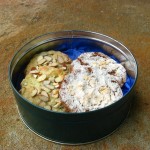 Final Step, share and enjoy They do make a handy breakfast, which is much easier to eat in the car than the pie. To your left, they are pictured with my Rhubarb-Almond Scones. They are perfect for sharing over breakfast, or in the afternoon over tea, or for dropping by and giving to friends.
Final Step, share and enjoy They do make a handy breakfast, which is much easier to eat in the car than the pie. To your left, they are pictured with my Rhubarb-Almond Scones. They are perfect for sharing over breakfast, or in the afternoon over tea, or for dropping by and giving to friends.
Shameless Plug
Image
Nietzsche Panel discussion (after hours at the Bistro)
 As anybody who follows my cooking knows, I am always up for trying something new. I also wonder if, in spite of the biographies on the “About the Bistro” page, some of my readers might be unfamiliar with the staff.
As anybody who follows my cooking knows, I am always up for trying something new. I also wonder if, in spite of the biographies on the “About the Bistro” page, some of my readers might be unfamiliar with the staff.
I thought we might have this week’s feature as a panel discussion.
Recently, Andy—long-time friend of the Bistro—
It seems like the Bistro’s version of the old radio  call-in show line ought to be,“Long-time customer, first time eater.”
call-in show line ought to be,“Long-time customer, first time eater.”
(Or maybe “eater” sounds too weird.“Consumer”?)
The gentleman in question has eaten here before;
if I recall, he had a salad, the peace lentils,
and the corn-cakes. Oh, and a side order of Russian Nihilism,
and Community v. Individualism for desert–with some remarkable cheese.
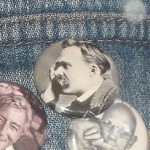 Anyway…he sent me a note asking “Where should I start with Nietzsche?”
Anyway…he sent me a note asking “Where should I start with Nietzsche?”
The mustache. If I were to start with Nietzsche,
it would be that mustache.
What the bloody hell is that thing all about?
Agreed.
“But if we start there, we may never stop.
It was a legendary and epic ‘stache.”
![]() I think he was asking what he should read first, guys.
I think he was asking what he should read first, guys.
For those of you newer to philosophy, Friederich Nietzsche was a 19th Century German Philosopher. He is best known for attacking many of the commonly held beliefs of Western and Christian culture, such as the notion of their being an absolute truth or absolute right and wrong.
I would recommend starting with Thus Spake Zarathustra, Andy.
Written throughout the summer of 1885, and first published i n 1886
n 1886
as Also sprach Zarathustra: Ein Buch für Alle und Keinen
(although the 4th section was added in later printings),
it is written in a heavily poetic, rather mystical style.
It lays out its ideas using the central character Zarathustra
as the author’s spokesperson. It contains many of
Nietzsche’s central ideas, such as the death of God,
eternal recurrence, the critique of the superficiality of modern man,
the “Übermensch”, self-overcoming, and so forth.
Thank you, Peirce;
Brandon, would you throw him a fish?
Tako Nigiri, if you please.
All we have is canned tuna.
Any sesame wafers left?
We could top it with a dollop of that Kentucky Whisky Aioli,
crumble some of those Sriracha Potato Chips on it…
![]()
Cooking is about all Kentucky whisky is fit for…
![]() As Peirce said, the book contains many of Nietzsche’s most important ideas, and they are well presented and dramatic. The most famous idea is the “Übermensch,” usually translated as superman or overman. This is a human who is constantly overcoming or overtaking or exceeding their own limitations, as well as the limitations imposed upon them by societal expectations, religion, and traditional morality. A lot of the fans of Nietzsche–his street cred–is based on this idea of the overhuman who rises above mundane morality.
As Peirce said, the book contains many of Nietzsche’s most important ideas, and they are well presented and dramatic. The most famous idea is the “Übermensch,” usually translated as superman or overman. This is a human who is constantly overcoming or overtaking or exceeding their own limitations, as well as the limitations imposed upon them by societal expectations, religion, and traditional morality. A lot of the fans of Nietzsche–his street cred–is based on this idea of the overhuman who rises above mundane morality.
When I taught college, I generally make students read the section on the madman, which discusses the death of God. One of the things I admire about Nietzsche is that he recognizes that the loss of God will actually have a tremendous cost to our culture. “God is dead! What will we do with the rotting corpse?”
This is maybe the most widespread misunderstandings about Nietzsche.
My dad took a Philosophy class in which the professor had written on the board
the first day the old joke,
“God is dead.” – Nietzsche
“Nietzsche is dead.” – God
In other words, “Suck it, Friedrich.” But it wasn’t Nietzsche’s intent to kill God. He just thought he was already dead, and insisted that we all make arrangements for the funeral.
The writing is poetic, even beautiful, and really fun to read. It is sort of like an ancient epic or holy scriptures.It is aphoristic, so you can read it chapter by chapter, and section by section, and don’t really need to study it.
Zarathustra is not, however, systematic or well argued.
Bloody Hell!![]()
It has less logical structure than Wagner’s Ring Cycle.
Wagner’s Ring Cycle.
That would be an interesting Laundry setting;![]()
I suppose it wouldn’t do for delicates, though.
For something with a bit more analysis, you might move on to the The Birth of Tragedy.
I agree.
Though it’s interesting that in order to move on we need to move back.
The Birth of Tragedy was Nietzsche’s first book, written all the way
back in 1872, when he was still a professor of classical philology in Basel
rather than a syphilis-ridden recluse in the Alps.
Which reminds me: Have you ever noticed how much “syphilis” looks like “Sisyphus”?
(Beware what you push up the mountain. It might roll back down.)
![]()
Syphilis or Sisyphus,
either way some poor bugger’s going to lose a rock.
I don’t get it.
You are better off not getting it, Peirce.
All righty, then.
The Birth of Tragedy, originally published as
Die Geburt der Tragödie aus dem Geiste der Musik,
or The Birth of Tragedy out of the Spirit of Music, it is an examination of Classical,
![]() and, more significantly, pre-classical Hellenic culture.
and, more significantly, pre-classical Hellenic culture.
Nietzsche explores the rise of the dramatic tragedies.
He contrasts the Dionysian ideal–one of ecstasy and freedom–to the Apollonian idea–one of control and reason. The original theatrical productions were tied to the ecstatic catharsis of the Dionysian rites,
but as it was fully developed, tragedy retains both elements in balance,
allowing the Greeks to look into the abyss of human suffering and affirm it,
passionately and joyously affirmed the meaning of their own existence.
While it has some commendible points, especially in the move away from the c![]() old, rationalist , ordered thinking he calles “Appollonian,”
old, rationalist , ordered thinking he calles “Appollonian,”
it is an oversimplificaton of Greek religious culture, ignoring the earthy nature of the other Gods–even Priapus or the phallic Herma.
Och! But before I spend the my hours criticizing Nietzsche
too much, I must say that it is a truer critique of that blasted bugger Kant then of Apollo.
You can critique Kant later, Wode,
![]() maybe when he comes in for spring peas in dill later this year.
maybe when he comes in for spring peas in dill later this year.
Yes, Nietzsche is definitely a spokesperson for the Romantics against
the dryness and over-rationalization of the Enlightenment.
Finally, Andy, I would recommend Beyond Good & Evil……
Ah. Beyond Good and Evil was first published in1886 as
Jenseits von Gut und Böse: Vorspiel einer Philosophie der Zukunf![]() t.
t.
It is less poetic than Zarathustra, but still largely a collection of observations
and pronouncements in either paragraphs or even short sayings.
By performing a genealogy—an examination of the origins
and nature of Judeo-Christian morality—
he calls it into question, showing its reliance upon philosophical dogmatism,
and proposing instead a perspectivism. It is a dramatic call to arms
to those who cannot abide living within the controls of slave morality,
advancing an extra-moral wisdom to be shared by those kindred souls
who think ‘beyond good and evil’.
Salut, Vache interrompant.
![]() It also introduces important ideas, like the will to power, and the idea that morality is an invention of the weak to handicap the strong.
It also introduces important ideas, like the will to power, and the idea that morality is an invention of the weak to handicap the strong.
OK, to wrap up, guys—is it weird that we are just guys? I mean, it doesn’t seem very inclusive. Except for Alex, the fantasy IT person, the Bistro only has males of the species….
“A woman is a woma![]() n,
n,
and a man ain’t nothing but a male.
One good thing about him,
He knows how to jive and wail.”
Wait: Who is Alice?
Alex. She is our tech support. You haven’t met her, yet, but will at some point.
The service appointment window I was given was “the Twenty-Teens,
give or take two hours.”
Wrapping up, take two. OK, to wrap up, guys, I think ….
Haud yer wheesht, Skinny Malinky Longlegs!![]()
You haven’t really captured why folks still read and quote Nietzsche 100 years after his death
and 130 years after he stopped writing. Although many of his romantic ideas had been expressed earlier, and even his nihilism had already been floating around for years—Dostoevsky had already critiqued the idea of the superman in Crime & Punishment in 1866, nobody writes the call
to arms against our certainties and complacencies better.
He is the John the Baptist of the absence of values, the John Knox of Post-Modernism.
He is the mustached prophet still preaching to punks, cyber-anarchists, and black clad emo kids.
![]() Fair enough. When I was young and alternative and used safety pins as a fashion accessory, I carried a paperback of Zarathustra in the knee-pocket of my cargoes.
Fair enough. When I was young and alternative and used safety pins as a fashion accessory, I carried a paperback of Zarathustra in the knee-pocket of my cargoes.
He is a wonderful thinker to work through, although you have to be careful not to make him an idol.
Wrapping up, take three. I think we should close by each quoting our favorite Nietzsche quote. Although I really like “but it is the same with man as with the tree. The more he seeks to rise into the height and light, the more vigorously do his roots struggle earthward, downward, into the dark, the deep – into evil.” I think I will go with:
Perhaps I know best why only humans laugh.
Only they suffer so deeply that they had to invent laughter.
This unhappy and melancholy animal is, as is proper, the cheeriest.
That faith makes blessed under certain circumstances, that blessedness does not make![]() of a fixed idea a true idea, that faith moves no mountains but puts mountains where there are none: a quick walk through a madhouse enlightens one sufficiently about this.
of a fixed idea a true idea, that faith moves no mountains but puts mountains where there are none: a quick walk through a madhouse enlightens one sufficiently about this.
 So many to choose from, but I will have to go with the chapter titles from Ecce Homo, which include “Why I am So Wise”, “Why I Write Such Good Books”, and my favorite: “Why I am a Destiny.” Whenever I do something breathtakingly dumb, I like to say, “This is why I am a destiny.” Oh stupidity, where is thy sting?
So many to choose from, but I will have to go with the chapter titles from Ecce Homo, which include “Why I am So Wise”, “Why I Write Such Good Books”, and my favorite: “Why I am a Destiny.” Whenever I do something breathtakingly dumb, I like to say, “This is why I am a destiny.” Oh stupidity, where is thy sting?
Without music, life would be a mistake.
Ramp Ravioli with Cashew Ricotta filling
![IMG_2040[1]](http://www.philosophybistro.com/wp-content/uploads/2013/05/IMG_20401-150x150.jpg) This is my Übermahl or Over-Meal, a process of self-transcendence that eschews traditional cooking and makes its home beyond the pale. It is also delicious.
This is my Übermahl or Over-Meal, a process of self-transcendence that eschews traditional cooking and makes its home beyond the pale. It is also delicious.
Ramps, for those of you who do not live in the Appalachian Mountains, are a variety of wild Leek than can be found in this region in the spring. It has a unique flavor, but is milder than onions or garlic..
Homemade Ravioli Cashew Ricotta Cheese
(lifted from the Simple Veganista http://thesimpleveganista.blogspot.com/2012/10/cashew-ricotta-cheese.html )
- 1½ cup raw cashews
- water
- 1 large lemon (or, in a pinch, 1 Tbsp vinegar
- 1 Tbsp nutritional yeast (optional)
- 1 clove garlic
- dash onion powder
- 1 tsp basil (optional)
- salt & pepper
Homemade Pasta (4 servings)
- 2 cups flour
- pinch salt
- 3 eggs (at room temperature)
- 1 Tbsp olive oil
- Ramps or other Special Ingredient: if you want to mix it up, add ½ cup of something interesting. For this recipe, I added blanched ramps, but I could have added beets or something else crazy.
![IMG_2036[1]](http://www.philosophybistro.com/wp-content/uploads/2013/05/IMG_20361-150x150.jpg) Step 3, People, people who knead pasta: When mixture becomes too thick to mix with a fork, begin kneading with your hands or your bread hook. Knead dough for 8 to 12 minutes, adding flour as it will take it—the final bit by hand even if you are using a machine. The dough will be harder than bread dough, and smooth and flexible.
Step 3, People, people who knead pasta: When mixture becomes too thick to mix with a fork, begin kneading with your hands or your bread hook. Knead dough for 8 to 12 minutes, adding flour as it will take it—the final bit by hand even if you are using a machine. The dough will be harder than bread dough, and smooth and flexible.Step 4, let it sit: Wrap dough tightly in plastic and allow it to rest at room temperature for 30 minutes.
Step 5, Roll on: Roll out the dough with a pasta machine or a rolling pin to your desired thickness. For the ravioli, I rolled it to about a millimeter. For long Pasta, I prefer it pretty thin. Cut into your favorite style of noodle or stuff with your favorite filling to make ravioli.
Step 5, alternate: Roll out the pasta into long sheets and place half of this  on a large, smooth surface. Put dollops of the ricotta mixture ad even intervals (do you like big raviolis or small ones?), and moisten the areas in between (to make the pasta stick). Cover the sheet with the other sheets and use gentle pressure to seal the little packets (or a ravioli roller, a cool but difficult tool). Cut in between the dollops—there is a crimper/cutter they make for this, but I use a knife. Press the edges of the packets with a fork to make sure they are sealed.
on a large, smooth surface. Put dollops of the ricotta mixture ad even intervals (do you like big raviolis or small ones?), and moisten the areas in between (to make the pasta stick). Cover the sheet with the other sheets and use gentle pressure to seal the little packets (or a ravioli roller, a cool but difficult tool). Cut in between the dollops—there is a crimper/cutter they make for this, but I use a knife. Press the edges of the packets with a fork to make sure they are sealed.
Step 6, cooking: Bring water to a boil in a large pot and add salt. Cook the pasta until al dente, 1 to 8 minutes depending on thickness. Drain, treat, and eat.
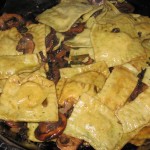 Extra Step, treating: You could just make some sauce, but for this, I prepared Browned Butter & Mushrooms. In a large skillet, sizzle a half stick of butter until it begins to brown. Add a half to a whole pound of sliced mushrroms, and allow them to brown as well. If too much of the liquide boils away, add more butter or a little white wine. Add some mixed garlic for the last little bit, long enough so it softens & releases its flavor, but not long enough to brown. Dump the pasta into this.
Extra Step, treating: You could just make some sauce, but for this, I prepared Browned Butter & Mushrooms. In a large skillet, sizzle a half stick of butter until it begins to brown. Add a half to a whole pound of sliced mushrroms, and allow them to brown as well. If too much of the liquide boils away, add more butter or a little white wine. Add some mixed garlic for the last little bit, long enough so it softens & releases its flavor, but not long enough to brown. Dump the pasta into this.
Sense and Nonsense
We all have weird little things that annoy us.
I realize that we language freaks live in a different world than most people. I try not to wince when people use whom and who incorrectly, and I try not to slap folks who use impact as a verb.
I realize that we foodies live in a different world than the most people. Your loss.
I realize that we philosophers live in a different world than the most people. I try not to wince when people confuse strong arguments with valid arguments, and simply giggle to myself when folks describe things as being phenomenal. However, we all have issues we feel must be addressed, and the time has come (the walrus said) to talk of one such thing.
Looking at some children’s books the other day, I was shocked. Isn’t it about time we told children the truth instead of filling their impressionable young minds with half-truths and fable? Science isn’t scary; ignorance is what is scary.
I saw some brand new picture books about the five senses.
NONSENSE!
Let me make one thing perfectly clear: there are more than five senses. With only five senses, you couldn’t even get out of bed in the morning. For one thing, without equilibrioception, the senses which give you feedback on your equilibrium, you couldn’t get up at all. Without the sense of proprioception, the sense of bodily location, you wouldn’t even know if you were up.
Scientists disagree on how many senses we actually have, but depending on how you 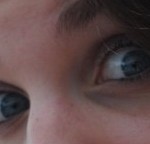 parse them, we have anywhere between 13 and four dozen. What I mean by parsing is this: we would all agree that we have a sense we call sight. Is color perception the same sense as light perception, or are these two (within the eye, there are two distinct structures which provide each) separate senses? Is depth perception, which couples visual input with an awareness of the angle of the eyes in relationship to each other a separate sense?
parse them, we have anywhere between 13 and four dozen. What I mean by parsing is this: we would all agree that we have a sense we call sight. Is color perception the same sense as light perception, or are these two (within the eye, there are two distinct structures which provide each) separate senses? Is depth perception, which couples visual input with an awareness of the angle of the eyes in relationship to each other a separate sense?
Similarly, are the five different types of mouth taste—sweet, salty, sour, bitter, and umami—all one sense, or are these five senses?
We know very little about smell, in large part because it is so complex. Odd that taste, which is relatively simple, is broken down into 5 different sensations, but smell, which is tremendously complex, is left as just one sense. I believe my dog, who can sniff a storm on the wind, would beg to differ.
 Hearing is also mysterious, and from a phenomenological perspective fascinating, since it includes speed and frequency and duration—it is the closest we come to sensing time directly.
Hearing is also mysterious, and from a phenomenological perspective fascinating, since it includes speed and frequency and duration—it is the closest we come to sensing time directly.
For folks who persist in the notion that there are only 5 senses, everything else is touch. Yet even for the common view of touch, is using my fingers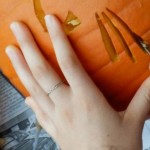 to sense the roughness of jagged granite, the pressure of a hand squeeze, and the temperature of the water in the dishrag bucket them same sense? If I were to feed you a grape, when you feel the pressure and give of it against your teeth as you bite into it, or when you feel the warmth of my breath against your cheek, or the gentle brush of my fingers across the back of your knee, are these all the same sense or are they different senses?
to sense the roughness of jagged granite, the pressure of a hand squeeze, and the temperature of the water in the dishrag bucket them same sense? If I were to feed you a grape, when you feel the pressure and give of it against your teeth as you bite into it, or when you feel the warmth of my breath against your cheek, or the gentle brush of my fingers across the back of your knee, are these all the same sense or are they different senses?
These, though, are only the outwardly directed senses. We in Western cultures are terribly forgetful of the body (you might not be at the moment, since I just tickled the back of your knee, but we as a culture are—trust me. And don’t get me started about Platonism). Most of the nerves we have are involved in provided us with feedback about our own bodies—even though these sensations often do not register consciously. When you kick me under the table (probably because I touched your knee), you will not have to look to see where your leg is—proprioception will let you sense where it is. This is useful if you drop something (your napkin, the Romanov jewels we lifted earlier that evening), have to locate it by feeling around with your foot, and then reach down—knowing where it is because you just felt it and knew where your foot was—you reach down your hand and pick it up.
In particular these kinesthetic senses are important because they allow the body to be the base from which all other senses operate. The kinesthetic sense of eye movement and adjustment is an important part of visual perception. Knowing where are body is allows the sense of touch to be effective. Body awareness allows us to integrate the external senses into a coherent awareness of our world. I have a good friend (Hey, Mel) who spends a great deal of time each day, each week retraining children who have an inadequate kinesthetic sense—an inability to be aware of where there body is. These senses can go haywire, and when they do, it affects everything.
How about temperature? You can sense the temperature of the air around you, but you can also sense your internal temperature. There is a tremendous difference in the different ways of sensing pain—pain on your skin (Cutaneous nociception), pain in your bones or joints (Somatic nociception), or internal organ pain (Visceral nociception). Nausea is sensed, but doesn’t fall neatly into any of the traditional 5 external senses, but also seems different from the pain of a stomach ache or a gut punch. Hunger is similarly sensed, but is a radically different feeling, and can be sensed either as a feeling of the stomach, or as a feeling of needing to eat, which is more realted to how the body feels in general. So many of these senses are vital to our survival, yet we don’t think of them as at all worthy of attention.
So enjoy your senses. Focus upon one at a time. Play with how many of them are involved in enjoying your meal tonight at the Bistro. They are all sensual–proprioception seems rather dull, but the sensation of dancing is magnificent. Equilibrioception is mundane, but we love playing games with it on swings and rollercoasters. Your senses are a wonder, but even this mystery pales beside the great mystery of how the mind puts them all together, and the greatest mystery of you being you.
Pita Bread
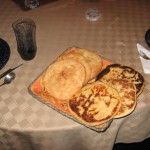 This recipe is adapted from a pita bread recipe my friend John—an excellent baker—got from Cooking Light. There are certain tricks—either oven or stove top, spritzing the breads with water to make them puff into pockets—which you can experiment with.
This recipe is adapted from a pita bread recipe my friend John—an excellent baker—got from Cooking Light. There are certain tricks—either oven or stove top, spritzing the breads with water to make them puff into pockets—which you can experiment with.
Ingredients:
- 1 Tbsp. honey
- 1 Tbsp. yeast
- 1 cup warm water
- 2 cups (maybe less?) bread flour
- 1 cup white whole-wheat flour
- 2 tbsp. Greek-style yogurt (such as Fage)
- 1 Tbsp. extra-virgin olive oil
- 3/4 tsp. salt
Step 1, I demand proof!: In a large mixing bowl (or the bowl for your mixer), whisk the honey and the yeast in 1 cup of warm water; let it stand 5 minutes to make sure it bubbles.
Step 2, yeast at work: Add in the wheat flour and let the mixture rest and rise for 10 minutes.
Step 3, mix & knead: Add in the yoghurt, olive oil, and salt. Gradually add in the remaining bread flour, switching to kneading or the bread hook as it becomes stiff.
Step 4, walk away again: Coat it with olive oil, put it in a big bread bowl, cover it, and leave it alone to rise until it is doubled, probably about an hour.
Step 5, short division: Divide the dough into 8 portions. Roll each portion into a 6 inch or so circle.
Step 6, choosing: At this point, you have two choices: baking the flat breads, or cooking them on the stovetop. My preference is to do four of each; the griddle ones are better fresh, the oven ones are better the next day, and it takes too long to do either alone.
Step 7a, baking: Preheat the oven to 500°, and position the oven rack on the lowest shelf. Grease a baking sheet heavily either by hand or with spray. Bake the rounds, one sheet at a time, for about 8 minutes or until puffed and browned.
Step 7b, griddling: Heat a large griddle, like an iron pan; grease it lightly.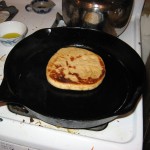 Place each round on the pan, flip after a few minutes before it begins to scorch. If you sprinkle a little water on the rounds, they will be more poufy, if you prefer them as flat bread, roll them thinner.
Place each round on the pan, flip after a few minutes before it begins to scorch. If you sprinkle a little water on the rounds, they will be more poufy, if you prefer them as flat bread, roll them thinner.
Step 8, wrapping up: Cool on a wire rack. 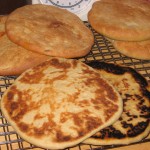 Serve as part of a Mediterranean meal, or with the White-Bean Dip, or with Hummus, or for sandwiches. Just do your best not to eat alone.
Serve as part of a Mediterranean meal, or with the White-Bean Dip, or with Hummus, or for sandwiches. Just do your best not to eat alone.


